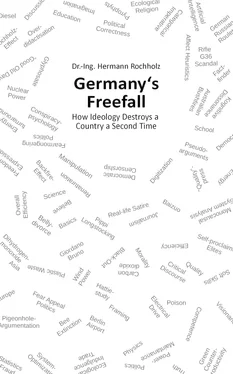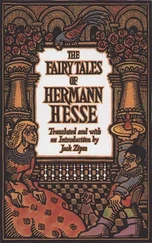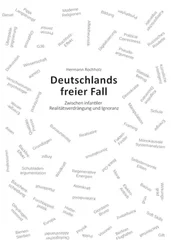But when the German “Green Dot” ships its plastic waste to Asia it looks strange when the German government pledges its support in finding the most clever way to dispose of the plastic waste of other countries.
After almost a decade spent on “bombarding” the population with images of suffering and dying marine animals, publications appeared in 2019 analyzing the composition of this waste. 10The majority of plastic floating around is fishing equipment, such as nets and the like. The origin of this waste was analyzed as well: Everything, in fact, is Asian. For a long time, Asia didn’t know how to dispose of its waste. Thus there’s little to no sensitivity to this problem among Asia’s human population. German politics is therefore able to solve non-existent problems in a media-effective way because the disposal of packaging materials is regulated very well in Germany.
Pseudo-Solutions
The envelope next to me is advertising donations. It’s filled with various “items” made from plastic – factually plastic waste. The following is written on the envelope: “A nice gift set with ballpoint pen in a practical gift bag is enclosed with this letter.” Above it reads: “I appreciate the extraordinary commitment from the many volunteers of the DLRG. Frank-Walter Steinmeier, President of Germany and patron of the DLRG (German Lifeguard Association)”.
The main point is that the German parliament banned plastic straws and bags by law. This is a classical example of the expediency of German politics. These “pseudo solutions” (electric scooters, plastic straws) do not contribute anything to the real solution of the problem and even hinder this by pretending to be solutions that they’re not.
It seems to be important to act in a media-effective way without the marine animals having anything to gain from it. Officially, however, one is working for the “welfare of animals”, of course.
Burning (Plastic) Materials
Burning plastic is like a red flag to environmentalists, something like blasphemy. Hence, everything has to be recycled – an energy-intensive process because you have to invest energy in order to recycle plastic. When it comes to expensive carbon-reinforced plastics, however, it may make sense to reuse these kinds of fibers. Otherwise, plastic is itself energy because it’s solely made up of hydrocarbons and, hence, solely of petroleum.
Combustion is an issue that we will examine later in terms of “energy” and the “energy supply”. When being “burned”, as we call it in colloquial German, plastics produce carbon dioxide (CO2) and water (H2O) and burn atmospheric oxygen. By-products, such as hydrochloric acid, or other products, such as nitrogen oxides, can be created. Hydrochloric acid can only be created when the plastic contains chlorine, for example in the case of PVC or polyvinyl chloride. Nowadays, a whole host of waste gas filters is placed on top of each chimney of the waste incineration plant. This has been the case for the past thirty years. Of course, pollutants can be detected in exhaust gases. No argument there. Everything can be detected with today’s measuring methods. If you were to examine the exhaust gases that any normal person exhales, you would probably have to shut these all down. It’s harmful to the environment, which is a real problem in cemeteries because corpses are hazardous waste, especially after a cancer therapy or with amalgam fillings.
Plastic has about half the calorific value of coal and petroleum per kilogram weight. About half of the energy can be produced during combustion. The carbon dioxide it emits is probably better since plastic has a higher proportion of hydrogen and thus not produce that much carbon dioxide during combustion. Instead, more water is released per energy produced. In chemistry lessons, the keyword here is the “stoichiometric ratio”. By the way, water vapor is a greenhouse gas as well. This is often glossed over because it doesn’t fit neatly into any pro-green argument.
Naturally, waste incineration plants emit pollutants. Naturally, not everything has to be burned. But recycling everything and shipping it abroad doesn’t seem to make much sense either.
Everything overdone is no good.
Waste that can’t be recycled is transported abroad using a lot of energy to be recycled there. That’s how people in Germany live according to the principle: “O Holy St. Florian, please spare my house, set fire to another one.” What’s so abstruse about the entire situation is that Germany has almost perfect control over its waste separation: Used paper and plastic packaging are sorted. Residual waste, such as kitchen waste, vacuum cleaner contents and similar waste combusts poorly. As a result, the last plastic waste is shipped to third world countries in order to be sorted there. Petroleum or other substances must be used in German waste incineration plants to increase waste combustibility. Single-variety plastics not used for packaging, such as old plastic buckets, end up as residual waste.
I once witnessed where I used to live how five containers of plastic waste were transported by truck to the Czech Republic. Why was this done?
Plastic packaging material is a relatively good fuel. Yet burning these is prohibited. The enterprising politician gets paid to dispose of the plastic by driving it to the Czech Republic using diesel fuel, thus increasing overall traffic congestion, and then burning it there in order to produce energy. Yet the politician in the Czech Republic gets to enjoy another salary.
Something like this is still relatively simple, contributing at least to a three-digit million Euro deficit for Germany every year, all the while making Germany look ridiculous to its neighbors, who aren’t that stupid either. Yet Germans are convinced that only they know the golden path. Now to something more complex.
Our Luxury Problem: Food and Toxin
Nothing can illustrate the tendency towards “self-optimization” better than the perennial subject of nutrition and toxins. This gets really complex now since both are closely intertwined.
The philosopher, physician and theologian Manfred Lütz points out in the introduction of his book “Lebenslust” (Lust for Life) that this is both a religious and a political topic, and satirical reality as well.
How susceptible nutrition is to Voodoo reporting can be demonstrated with the subject “margarine”. A study was published over fifty years ago that warned of the dangers of cholesterol. The company Procter&Gamble, was advertising margarine since butter and the cholesterol contained therein were regarded as bad for the heart. This “insight” was based on a single study. This resulted in “mountains of butter” in Germany, which had preoccupied the media for months on end. So much butter was not eaten that it was given away to East Germany. East Germany then sold it back to West Germany to obtain foreign currency.
The problem was that the study had been rigged: Twenty-two countries were examined, but the results from only seven countries, which produced “correct” results, were published (it was even called “The Seven Countries Study”). The author, Ancel Keys, had admitted in a 1997 interview that there had never been a connection between dietary cholesterol and cholesterol associated with heart disease.
One single fake study had caused billions of Deutschmarks in damage and only because people wanted to “believe” things and cared about their health. Strangely enough, no one has come up with the idea that the situation could be the same today, just concerning other matters. This behavior can, I think, be called “naive”.
Coincidentally, forty years ago I had personally attended a lecture by a nutritionist who was already complaining about the margarine hype and who preferred butter. He demonstrated how unnatural the production process of margarine can be. It was thus known. Facts were already being ignored back on those days. Furthermore, the expert warned against the traces of catalysts present as heavy metals in cheap margarine as a residue from the manufacturing process.
Читать дальше











